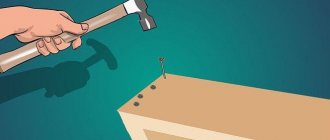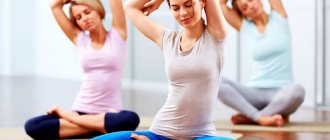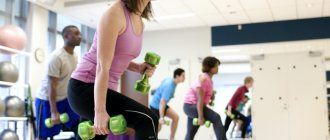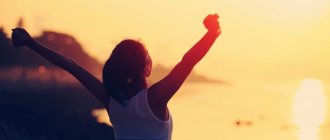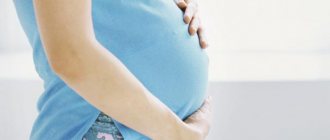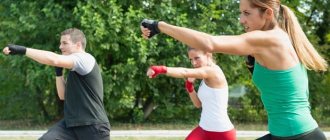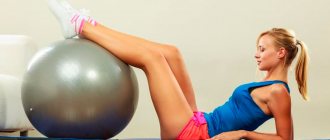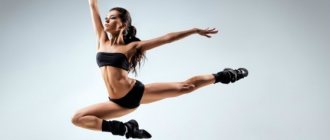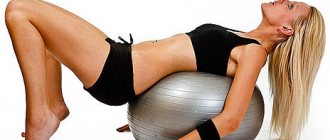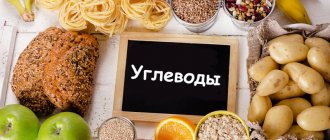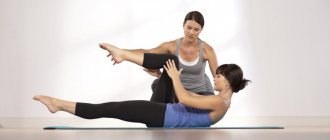Studio course
(Comprehensive Studio)
It is studio Pilates that provides a complete understanding of the Pilates method and the entire set of knowledge, skills and abilities necessary for successful work in the studio.
The training consists of six two-day modules (16 hours each).
If you are thinking about a career as a personal Pilates trainer, or, already having experience as a Pilates trainer, are looking for new tools to improve the results of your activities, or want to expand and structure your existing knowledge, the Studio Pilates course is for you.
Long-term training (on average, a course lasts 6-8 months) allows you to consistently assimilate information, accumulating and honing teaching skills, improving personal practice.
One of the most important advantages of the Studio Pilates course is the use of a fitness test (Polestar Pilates Screening TM), which allows you to assess the client’s functional state, analyze the information received and, on this basis, create an optimal training program taking into account the client’s personal goals and health status.
Register for the seminar
Each studio Pilates module consists of:
- theoretical material (lectures on anatomy, theory and teaching methods)
- practical part (studying, mastering execution techniques, learning to teach exercises)
- fitness testing (assessment and analysis of the client’s functional capabilities, defining goals, drawing up a sequence of exercises and progressions in accordance with the principles of Polestar Pilates
The Polestar Pilates Principles of Movement module must be completed prior to the main in-person training!
During your training in the Studio Pilates course, you will learn more than 150 exercises, as well as many of their variations and modifications using the Reformer, Trapeze Table, Pilates Chair, Ladder Barrel, Spine Corrector, as well as exercises on the mat.
Module 1 (S/R1) - about the module...
Module 1 (S/R1) - about the module...
Goal: to master basic exercises for beginners using all kinds of equipment, to introduce Polestar Pilates functional diagnostics.
Theory: basics of posture assessment; training in setting up equipment taking into account the safety of the client and the most convenient location of the instructor.
Practice: Hip exercises, basic core stabilization, thoracic spine mobility, lower extremity alignment.
Module 2 (S/R2) - about the module...
Pilates journal
Chino (Elias Serize) is a teacher of Latin American social dances: Cuban salsa, Dominican bachata and merengue. He was born in Cuba and danced since childhood, and when he received his pedagogical education, he began to share his experience and knowledge with his students. Arriving in Moscow more than ten years ago, Chino became one of the first bachata teachers in Russia and developed his own effective teaching methodology, thanks to which even beginners, after 2-3 months of classes, begin to enjoy dancing in pairs, without the need for complex patterns. He also organized the first bachata festival and competition in Moscow, conducted a huge number of master classes and seminars in different cities and established himself as an excellent teacher, choreographer and dancer. His elegant, memorable style and positive energy immediately attract attention on the dance floor. Classes with Chino are interesting for both beginners and experienced dancers, as they help everyone develop interaction skills in pairs, plasticity and a sense of rhythm, and express their individuality in dance.
I invited this wonderful teacher to a Pilates lesson. Judging by the schedule, Chino spends a lot of time in the dance hall, as well as in nightclubs. During many hours of dance lessons, he experiences great physical stress on his joints and spine. Therefore, I offered him a trial Pilates lesson aimed at relieving tension in the lower back and improving the mobility of the hip joints and spine.
After the training I had the opportunity to ask the maestro a few questions. I was very interested to know what Chino thinks about Pilates?
How did today's training make you feel?
This morning I didn’t feel very well, I was a little nervous and upset. After a series of exercises, I feel very relaxed, calm, as if on a cloud. This has a great effect on the nervous system.
How do you think Pilates can benefit dancers?
Of course, this practice helps a lot because it allows you to relax, primarily psychologically, and this makes it easier to dance.
What sensations did you have in your body after training?
The exercises helped relieve tension in the body and legs. By working with the shoulder girdle and spine, the back muscles are stretched and relaxed, and this gives a feeling of lightness in the body and improves mobility.
Do you think it will be easier for those who practice Pilates to learn to dance bachata?
Certainly! This practice simplifies the process and helps develop coordination. And if you combine several Pilates classes a week with dancing, you can dance the whole week in one breath. Many people are very tense and have a tight core, which makes learning difficult. Pilates exercises will help them relax, because in social Latin American dances the core should not be too tense. Pilates plus dancing is an excellent combination!
Anyone who wants to learn to dance can join any group at the Chino Dance School, regardless of age or physical fitness. A strict and demanding teacher, Chino at the same time maintains a friendly, relaxed atmosphere in his classes. His lessons help you acquire not only the ability to control your body, dance beautifully and musically, and become more familiar with the sunny culture of the Caribbean islands, but also make many new friends!
All details on the website: www.chinobachata.ru
and on social networks:
www.fb.com/chinobachata.ru
www.vk.com/chino.bachata
www.youtube.com/chinobachata
You can purchase a PILATES master class FOR BEGINNERS right now!
Send an email to the following address: I WANT PILATES FOR BEGINNERS!
Cost of the master class: 890 rubles.
You will receive a master class with a detailed description of the exercises and photographs of Chino in pdf format.
Now you can do Pilates anywhere and at a time convenient for you!
https://youtu.be/YH830dJas40
Module 2 (S/R2) - about the module...
Goal: to master exercises for beginners and for initial intermediate levels of preparedness using a variety of equipment.
Theory: Creating Polestar Pilates Workout Programs and Exercise Sequences
Practice: basic shoulder positioning, spinal mobility in flexion and lateral flexion, increasing core strength, developing spinal traction capabilities and stretching the lower extremity muscles.
Module 3 (S/R3) - about the module...
Yoga and Pilates
Yoga practices are thousands of years of experience in training the human spirit through physical exercise. Pilates is more focused on sharpening the body and strengthening the spine. Yoga is based on asanas in which a person remains for several minutes. Pilates is characterized by dynamic classes with smooth transitions from exercise to exercise.
Practices and breathing techniques differ. Pilates uses chest breathing, which helps strengthen the pectoral muscles. The author of the system also insisted that proper breathing helps saturate the muscles with oxygen.
The uniqueness of Pilates is that the exercises are performed with a neutral position of the spine, which does not allow deflection in the lower back. As a result, the back “springs” and acts as a kind of shock absorber. Beautiful posture is guaranteed to you
Module 3 (S/R3) - about the module...
Goal: to master exercises for an average level of preparedness using a variety of equipment.
Theory: Using Visualization in Pilates Training
Practice: exercises to improve the functional state of the upper extremities using weights, standing alignment and balancing, stabilization of the “center” of average complexity, harmonious level of mobility of the spine, analysis of movements of average complexity.
Module 4 (S/R4) - about the module...
Features of dynamic Pilates on a reformer
By doing Pilates on a reformer, you will not lose weight or build muscle, but you will get much more - a healthier body.
The simulator was created more than 100 years ago, but today it remains the most popular in classes. This is the favorite exercise machine of world celebrities. The photo shows a Pilates reformer, which consists of springs, a movable platform, and belts with loops for the arms and legs. The simple design gives a visible effect during training. All exercises are performed on an unfixed platform. Your task is to keep the platform from moving using your arms and legs. You tense all the muscles, working them sequentially.
The advantage of Pilates on a reformer is that there is no additional stress on the back and spine, which means that the likelihood of injury is reduced to zero. Training is carried out under the supervision of a trainer who coordinates movements, teaches proper breathing and monitors the implementation of training. For each visitor, the load and intensity of training is determined individually.
Module 4 (S/R4) - about the module...
Goal: to master exercises for intermediate and initial advanced levels of preparedness using all kinds of equipment.
Theory: the use of tactile correction in training using the Pilates method.
Practices: upper limb strengthening exercises using weights for advanced clients, core flexion exercises for advanced clients, intermediate standing exercises, lower extremity strengthening and alignment, spinal traction exercises for advanced clients.
Module 5 (S/R5) - about the module...
Pilates: getting back to life in just 10 classes
The exercise system, popular today in many countries around the world, is named after its creator. A native of Germany, Joseph Pilates was a sickly child as a child - he suffered from asthma and rickets. At first, the boy, in order to avoid ridicule and barbs from his peers, was intensely involved in sports, yoga and bodybuilding. And having matured, he not only improved his health, but also created a perfect body - he was even invited as a model for anatomy classes. This prompted Pilates to search for a unique technique that would help to gain health and maintain it for as long as possible.
Before a harmonious system appeared, Pilates had the opportunity to bring bedridden wounded soldiers back to life during the First World War - for them he came up with a special exercise technique, equipping hospital beds with belts and springs (prototypes of modern special reformer simulators). Then, while in New York, he helped athletes, ballet dancers, and artists quickly regain physical shape after injuries. He himself lived to be 87 years old and already in his old age admitted that thanks to his technique he still does not get sick and does not take medications, is successful with women, and sometimes allows himself to violate a healthy lifestyle.
Joseph had many followers who spread his system throughout the world; there are now Pilates schools in different countries. They are somewhat different from each other - the methodology has changed depending on the mentality and traditions of a particular country: in America, for example, this is a more athletic and strength form of training. In England there is a more academic and therapeutic method. Italian Pilates is more danceable and artistic.
Back to life
They say about Pilates: it is a system that combines Eastern and Western healing practices. What does it mean? Pilates is based on exercises from yoga and traditional oriental schools. But they are performed in the most effective mode for strengthening muscles - static-dynamic, which allows you to achieve quick results. This is the case when the slowness and thoroughness of the Eastern mentality is successfully combined with the focus on a specific task and quick results of the Western mentality.
Pilates is especially recommended for those who have problems with the spine (poor posture, osteochondrosis, injuries, intervertebral hernia, and joint pain). Numerous medical studies have confirmed the effectiveness of Pilates in the complex treatment of these problems. In addition, regular exercise normalizes the activity of the cardiovascular and respiratory systems, as well as the autonomic nervous system (in people suffering from unstable blood pressure, it is normalized). After just a few sessions, a person feels noticeable changes: posture, balance, coordination, gait improve, the body becomes more flexible and obedient, and vitality increases.
“It never ceases to amaze how changes in physical condition are inevitably followed by psychological ones: self-confidence appears and mood improves,” notes exercise therapy doctor and Pilates instructor Galina Dremova. – A person’s perception of the world and his way of life are gradually changing. All this ultimately has a positive effect on both professional activities and personal life.”
“After 10 classes, your body will change, after 20, others will notice it, after 30, you will become a different person,” Joseph Pilates himself said. It is not for nothing that he designated the ongoing changes as “a return to life.”
Intellectual gymnastics
The specificity of Pilates is such that almost all muscle groups are involved during classes. The basis of the exercises is training the so-called muscle corset: achieving coordination in the work of the abdominal muscles and deep back muscles that form posture. Today, the methodology includes over 500 exercises and their modifications.
The technique involves both individual and group lessons. Conventionally, they are divided into three types: Pilates mat (exercises on a gymnastic mat), Pilates using accessories (rings, bands, balls, gymnastic sticks, belts) and Pilates on special reformer machines.
Traditionally, the lesson begins with “building” the body - from the feet, just as a building is built - from the foundation. Exercises for coordination and balance quickly set up a “dialogue with the body.” Next, “floors” are built up: the correct position of the joints, pelvis, chest, shoulders, head is fixed, which you must strive to maintain during all exercises.
Pilates can easily be considered intellectual gymnastics. It not only flexibly takes into account individual health characteristics, but also involves various levels of brain activity in learning. Thus, to perform exercises more correctly in Pilates, a system of visual images is used, and this helps people who do not know anatomy activate the necessary muscle groups. For example, if you ask a person to activate the internal abdominal muscles, not everyone will understand and do it correctly. But if you use the image of a zipper being fastened, the stomach will tighten and there will be no mistakes.
To each his own
Pilates was originally created as a rehabilitation technique, and therefore has contraindications similar to exercise therapy. Among them are the so-called acute and febrile conditions, severe pain syndrome, and mental illness. In other cases, the diagnosis does not matter.
Experts assure that if a person can walk at least from home to the store, then in his range of movements one can already find exercises that will help him expand his motor potential and relieve muscle discomfort. The initial level of a person’s physical condition is much more important (the magnitude of the load will depend on this), as well as his previous experience of physical activity (those who have done something before will understand and master the exercises faster).
Complex exercises are not immediately offered to a beginner; they are introduced to them gradually. First, the instructor shows all the options, and the student chooses the one that is within his capabilities at the moment. And he practices until he feels confident and understands that it’s time to move to the next level of difficulty. Often the instructor recommends a set of home exercises that should not be ignored: after all, the key to success is regularity.
Eight principles of Pilates
- Concentration allows you to keep your attention on the working muscles and the content of the exercise, as a result of which the muscles that form correct posture are strengthened.
- Breathing is the most important principle of the method. During classes, the emphasis is on diaphragmatic breathing. General rule: exhale - during the positive phase of the exercise; inhale – return to the starting position, avoiding muscle overstrain.
- Centering is maintaining a balance between the right and left halves of the body, between the internal muscles of the abdomen and lower back, which, in turn, stabilizes posture.
- Alignment is the desire to maintain correct body position in any exercise, constant control of posture.
- Coordination – coordination of all acquired skills for accurate and precise execution of movements in exercises.
- Smoothness of movements – slow and smooth execution of exercises in a non-stop mode, without sudden movements and long rest pauses.
- Relaxation is the ability to get rid of excess tension and not create it in those parts of the body that are not involved in the exercise.
- Endurance – a gradual increase in load and complication of exercises, increasing the endurance of the main muscles.
Pilates and Yoga Club
Website:
pilatesyoga.ru
Address:
Moscow, Fadeeva str. 9 (nearest stations: Novoslobodskaya metro station, Mayakovskaya metro station, Mendeleevskaya metro station)
Telephone:
,
Photo: istockphoto.com
Module 5 (S/R5) - about the module...
Goal: to master exercises for advanced clients using a variety of equipment
Theory: communication skills in training using the Pilates method.
Practice: exercises to strengthen the muscles of the “center” when flexing the spine for advanced clients, exercises to strengthen the muscles of the upper and lower extremities for advanced clients, lateral flexion exercises for advanced clients, exercises in a standing position and maintaining balance, analysis of exercises of an advanced level of complexity.
Module 6 (S/R6) - about the module...
Types of Pilates workouts
Pilates is such a universal system that it is suitable for people of different ages and genders. It is not contraindicated for pregnant women either. Here everyone will find exactly the complex that will help debug the functioning of the body. It could be
- Pilates matwork. All muscles work, from the deep ones, which are responsible for correct posture, to those that control the movements of small muscles. As a result of training, the spine will get rid of tension, the body will gain flexibility. If you have been suffering from back pain, everything will disappear;
- Pilates with small equipment (Pilates plus). Training is carried out using a Pilates ball, isotonic ring, band shock absorber, etc. Such exercises make it possible to simultaneously engage all muscle groups;
- Pilates for deep stretching of muscles and ligaments (Pilates Stretch). These classes are an example of classical Pilates. The basis is deep stretching. The system is good for restoring the functions of muscles, ligaments, joints, and spine;
- Power Pilates. Aims at involving all muscle groups. Classes are held using strength equipment: dumbbells, bodybar, band shock absorber;
- Pilates for seniors (Pilates 50 plus). This is a unique system that has no analogues in the world. During the exercises, joints and the musculoskeletal system are restored, metabolic processes return to normal, Pilates prevents prolapse of internal organs and loss of coordination.
- Pilates for pregnant women (Prenatal Pilates). Helps the female body prepare for hard work during childbirth. In training, attention is paid to the circulatory system and abdominal muscles. When preparing for childbirth, it is important to learn to control your breathing. Pilates helps improve breathing, monitor its volume and fill the lungs.
- Pilates Balance develops a sense of balance. People learn to distribute the load on the muscles and maintain the same body position.
The training program for pregnant women is selected individually. The choice of exercises depends on the stage of pregnancy and the woman’s well-being.
Whatever program you choose, remember that Pilates will only bring results in the unity of body and mind.
Module 6 (S/R6) - about the module...
Goal: to master exercises for advanced clients using a variety of equipment
Theory: Bioenergy, healing effects of exercises.
Practice: exercises of an advanced level of complexity in all possible planes and starting positions; solving practical problems from educational examples – selection of exercises and training plans based on knowledge of the “Fitness Screening” methodology (Polestar Pilates Screening)
Module 1 (S/R1) - schedule...
PILATES - TRAIN YOURSELF COMPREHENSIVELY AND SMARTLY,
after all, Pilates is a fusion of the best of various gymnastic and dance trainings.
The Pilates set of exercises was born from the study of both modern medical research in the field of health and ancient cultures of caring for the body and spirit of a person, such as yoga and tai chi (tai chi). After all, one cannot simply brush aside the knowledge and observations accumulated over thousands of years. If you strive for both good physical fitness and spiritual harmony, if you prefer smooth lines, gracefulness and thoughtfulness to sharp and fast “breaking” movements, if control over every action and sensation is important to you, then Pilates classes will satisfy you. all your wishes.
Joseph Pilates far-sightedly argued that any movement should be meaningful and controlled by the mind, that you should not strain 15 “extra” muscles where only certain two are sufficient. After several introductory Pilates classes, the performance of the complex will turn into a smooth, enchanting dance, where there are no pauses between figures, breathing does not falter, tension goes away and only the beauty of the body remains, obedient to your desires. Only an initiate is able to see the boundaries between exercises and understand that Pilates is a dance performed solely for one’s own pleasure, and the rest can wait. In Pilates classes there is no place for judges and competitions, competitors and spectators, failures and injuries. The only person you need to agree with is yourself.
Module 1 (S/R1) - schedule...
The first day
- 10.00 – 18.00 Functional diagnostics (possibly in person or online)
Second day
- 09.00 - 10.00 Master class
- 10.00 - 11.00 Lecture 1. Basics of posture assessment
- 11.00 – 11.15 Coffee break
- 11.15 – 12.00 Practical lesson: Basics of posture assessment
- 12.00 - 13.00 Lecture. Contraindications to movements
- 13.00 - 14.00 Lunch
- 14.00 - 16.00 Practical lesson 1. Demonstration. Practice
- 16.00 - 16.15 Coffee break
- 16.15 - 18.00 Practical lesson 1. Demonstration. Practice. Continuation. Discussion
Day three
- 09.00 - 10.00 Master class
- 10.00 - 11.00 Practical lesson 2. Demonstration. Practice
- 11.00 – 11.15 Coffee break
- 11.15 – 13.00 Practical lesson 2. Demonstration. Practice. Continuation
- 13.00 - 14.00 Lunch
- 14.00 - 15.45 Practical lesson 2. Demonstration. Practice. Completion
- 15.45 - 16.00 Coffee break
- 16.00 - 17.45 Fitness testing, analysis of clinical cases
- 17.45 - 18.00 Review and feedback on the course
Module 2 (S/R2) - schedule...
LiveInternetLiveInternet
Pilates is a special set of exercises aimed at developing flexibility and mobility. By doing Pilates you can strengthen your muscle corset and help in rehabilitation after injuries.
If you don’t have time, this complex will help you maintain muscle tone; in addition, it is suitable for beginners and does not require special equipment.
Let’s also look at in what cases is it recommended to practice the Pilates system? Contraindications and indications for this type of fitness are clearly regulated by doctors, whose opinion should be taken into account before starting Pilates classes.
Indications for Pilates classes You can hear everywhere that in order to start your own Pilates training system, there is no need to find reasons. In fact they exist. The founder of the Pilates system clearly regulated the indications for his method. Thus, its main goal was the complete rehabilitation of the body after illnesses or injuries , especially when it comes to the muscular frame and musculoskeletal system. In addition to injuries and diseases, a special indication for the use of Pilates is the prevention and initial stage of arthrosis and osteoporosis.
Scoliosis deserves special attention . Most doctors loudly insist that Pilates, like other types of modeling and strengthening gymnastics, is contraindicated for people with this disease. However, in the initial stages, under the supervision of a tandem, the doctor and trainer can choose from the many exercises of this system their own complex, which would strengthen the muscle frame, but at the same time would not load the spine with twisting and bending. By the way, one should approach Pilates so carefully if the trainee is diagnosed with an intervertebral hernia .
Pilates is also suitable for those who suffer from headaches, especially migraines. You should not expect complete relief, but it is quite possible to prevent attacks and reduce their pain.
There are also age indications for Pilates. The number of people for whom Pilates is recommended as a physical activity includes those who have crossed the line of 40 years of age . In addition, this system is useful for children and adolescents.
Children who spend a long time in a sitting position (schoolchildren, musicians) need gentle physical activity. Teenagers, in turn, can use Pilates as a kind of therapy for pain in joints and muscles due to age-related hormonal growth, which is also accompanied by increased fatigue and, sometimes, sudden changes in mood.
Also, special indications for the use of Pilates are obesity, accompanied by shortness of breath and muscle weakness. The principles of its use will allow not only to steadily and evenly reduce the level of subcutaneous fat, but also to safely rid internal organs of it.
Contraindications to Pilates Unfortunately, even such a safe system as Pilates has its own contraindications. Contraindications usually include the following factors:
- colds and viral diseases , accompanied by a significant increase in temperature. You should stop training at a fever of 37.5 degrees. Such a categorical statement is explained quite simply - coordination of movements in this state is significantly reduced, which can lead to injury;
- tumors, especially of the skeletal system . Neglecting these prohibitions can lead to fractures and progression of the disease; Untreated bone fractures and ruptures/sprains of muscles and ligaments. Yes, Pilates helps accelerate rehabilitation, but only after the bones and muscles have returned to a healthy state. Otherwise, there is a high probability of relapse;
- scoliosis, grade 3 flat feet, spinal injuries . The ban is explained by the fact that the components of the “center of power” with these diseases are not able to withstand even a mild, but still load. And doing Pilates can make the situation worse.
- mental illness . Pilates is based on concentration on movement and a heightened awareness of one's own body during exercise, which is quite difficult for a person suffering from clinical mental disorders to achieve.
- risk of bleeding.
In conclusion, it is only worth noting that the Pilates system, the indications and contraindications for which were described above, even in this respect does not deviate from its main principle, which states that a healthy body can only be formed if there is a reasonable approach to its creation. 4allwomen.ru
See also:
Pilates for dummies
Pilates for weight loss
Pilates. First level.
Module 2 (S/R2) - schedule...
The first day
- 09.00 - 10.00 Master class
- 10.00 - 11.00 Practical lesson 3. Demonstration. Practice
- 11.00 – 11.15 Coffee break
- 11.15 – 13.00 Practical lesson 3. Demonstration. Practice. Continuation
- 13.00 - 14.00 Lunch
- 14.00 - 15.15 Practical lesson 3. Demonstration. Practice. Continuation
- 15.15 - 16.00 Lecture 2. Development and planning of an exercise program
- 16.00 - 16.15 Coffee break
- 16.15 - 17.00 Lecture 2. Development and planning of an exercise program. Continuation
- 17.00 - 18.00 Test. Group 1
Second day
- 09.00 - 10.00 Test. Group 2
- 10.00 - 11.00 Practical lesson 4. Demonstration. Practice
- 11.00 – 11.15 Coffee break
- 11.15 – 13.00 Practical lesson 4. Demonstration. Practice. Continuation
- 13.00 - 14.00 Lunch
- 14.00 - 15.45 Practical lesson 4. Demonstration. Practice. Completion
- 15.45 - 16.00 Coffee break
- 16.00 - 17.45 Fitness testing, analysis of clinical cases, development of training programs
- 17.45 - 18.00 Review and feedback on the course
Module 3 (S/R3) - Schedule...
Studios on the reformer in Moscow
To achieve high results, it is much more effective to practice Pilates on special medical simulators. They can significantly speed up rehabilitation, relieve pain of a neurological and orthopedic nature, make muscles more elastic and joints more flexible. When exercising on a reformer, the central muscle fibers are in constant tension, which makes it possible to thoroughly work them out.
This service is provided by:
- Republika;
- Pilates Class.
* The material is published as an advertisement.
Module 3 (S/R3) - Schedule...
The first day
- 09.00 - 11.00 Practical lesson 5. Demonstration. Practice
- 11.15 – 11.30 Coffee break
- 11.30 - 13.00 Lecture 3. Using images
- 13.00 - 14.00 Lunch
- 14.00 - 16.00 Practical lesson 5. Demonstration. Practice. Continuation
- 16.00 - 16.15 Coffee break
- 16.15 - 17.00 Practical lesson 5. Demonstration. Practice. Completion
- 17.00 - 18.00 Test. Group 1
Second day
- 09.00 - 10.00 Test. Group 2
- 10.00 - 11.00 Practical lesson6. Demonstration. Practice
- 11.00 – 11.15 Coffee break
- 11.15 – 13.00 Practical lesson 6. Demonstration. Practice. Continuation
- 13.00 - 14.00 Lunch
- 14.00 - 15.45 Practical lesson 6. Demonstration. Practice. Completion
- 15.45 - 16.00 Coffee break
- 16.00 - 17.45 Fitness testing, analysis of clinical cases, development of training programs
- 17.45 - 18.00 Review and feedback on the course
Module 4 (S/R4) - Schedule...
Module 4 (S/R4) - Schedule...
The first day
- 09.00 - 10.00 Test group 1
- 10.00 - 11.15 Lecture 4. Tactile commands
- 11.15 – 11.30 Coffee break
- 11.30 - 13.00 Practical lesson 7. Demonstration. Practice
- 13.00 - 14.00 Lunch
- 14.00 - 16.00 Practical lesson 7. Demonstration. Practice. Continuation
- 16.00 - 16.15 Coffee break
- 16.15 - 18.00 Practical lesson 7. Demonstration. Practice. Completion
Second day
- 09.00 - 10.00 Test. Group 2
- 10.00 - 11.00 Practical lesson 8. Demonstration. Practice
- 11.00 – 11.15 Coffee break
- 11.15 - 13.00 Practical lesson 8. Demonstration. Practice. Continuation
- 13.00 - 14.00 Lunch
- 14.00 - 15.45 Practical lesson 8. Demonstration. Practice. Completion
- 15.45 - 16.00 Coffee break
- 16.00 - 17.45 Fitness testing, analysis of clinical cases, development of training programs
- 17.45 - 18.00 Review and feedback on the course
Module 5 (S/R5) - Schedule...
Module 5 (S/R5) - Schedule...
The first day
- 09.00 - 11.00 Practical lesson 9. Demonstration. Practice
- 11.00 – 11.15 Coffee break
- 11.15 - 13.00 Practical lesson 9. Demonstration. Practice. Continuation
- 13.00 - 14.00 Lunch
- 14.00 - 15.15 Lecture 5. Communications
- 15.15 - 16.00 Practical lesson 9. Demonstration. Practice. Continuation
- 16.00 - 16.15 Coffee break
- 16.15 - 17.00 Practical lesson 9. Demonstration. Practice. Completion
- 17.00 - 18.00 Test. Group 1
Second day
- 09.00 - 10.00 Test. Group 2
- 10.00 - 11.00 Practical lesson 10. Demonstration. Practice
- 11.00 – 11.15 Coffee break
- 11.15 – 13.00 Practical lesson 10. Demonstration. Practice. Continuation
- 13.00 - 14.00 Lunch
- 14.00 - 15.45 Practical lesson 10. Demonstration. Practice. Completion
- 15.45 - 16.00 Coffee break
- 16.00 - 17.45 Fitness testing, analysis of clinical cases, development of training programs
- 17.45 - 18.00 Review and feedback on the course
Module 5 (S/R5) - Schedule...
